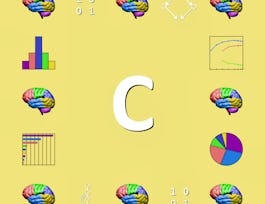This course will help prepare students for developing code that can process large amounts of data in parallel. It will focus on foundational aspects of concurrent programming, such as CPU/GPU architectures, multithreaded programming in C and Python, and an introduction to CUDA software/hardware.



Introduction to Concurrent Programming with GPUs
This course is part of GPU Programming Specialization

Instructor: Chancellor Thomas Pascale
Sponsored by Barbados NTI
12,476 already enrolled
Recommended experience
What you'll learn
Students will learn how to develop concurrent software in Python and C/C++ programming languages.
Students will gain an introductory level of understanding of GPU hardware and software architectures.
Skills you'll gain
Details to know

Add to your LinkedIn profile
4 assignments
See how employees at top companies are mastering in-demand skills

Build your subject-matter expertise
- Learn new concepts from industry experts
- Gain a foundational understanding of a subject or tool
- Develop job-relevant skills with hands-on projects
- Earn a shareable career certificate


Earn a career certificate
Add this credential to your LinkedIn profile, resume, or CV
Share it on social media and in your performance review

There are 5 modules in this course
The purpose of this module is for students to understand how the course will be run, topics, how they will be assessed, and expectations.
What's included
3 videos4 readings1 programming assignment2 discussion prompts1 ungraded lab
In order to create software that process greater amounts of data at faster speeds, software operating systems, programming languages, and frameworks require strategies for accessing and modification of data in a manner that maximizes speed, while minimizing the possibility of data being in incorrect states. In this module, students will be presented canonical concurrency problems such as the Dining Philosophers. Additionally, they will learn how operating systems and programming languages handle these problems, and discuss real world big data concurrency applications.
What's included
6 videos3 readings2 programming assignments1 discussion prompt1 ungraded lab
Modern programming languages allow developers to create software with complex logic for manipulation of data in parallel, taking advantage of the multiple CPU cores in most computers. Students will develop simple software, written in the C++ and Python 3 programming languages, that process data sets concurrently.
What's included
6 videos2 readings2 assignments2 programming assignments1 discussion prompt2 ungraded labs
The purpose of this module is for students to understand the basis in hardware and software that CUDA uses. This is required to appropriately develop software to optimally take advantage of GPU resources.
What's included
9 videos1 reading1 assignment2 programming assignments1 discussion prompt1 ungraded lab
The purpose of this module is for students to understand the principles of developing CUDA-based software.
What's included
6 videos1 reading1 assignment2 programming assignments1 discussion prompt1 ungraded lab
Instructor

Offered by
Why people choose Coursera for their career




Recommended if you're interested in Computer Science

University of Colorado System

Codio

Open new doors with Coursera Plus
Unlimited access to 10,000+ world-class courses, hands-on projects, and job-ready certificate programs - all included in your subscription
Advance your career with an online degree
Earn a degree from world-class universities - 100% online
Join over 3,400 global companies that choose Coursera for Business
Upskill your employees to excel in the digital economy




